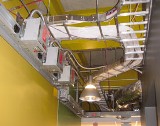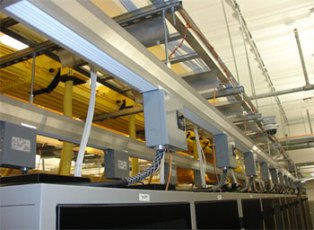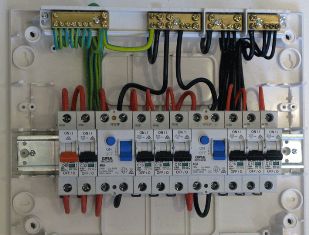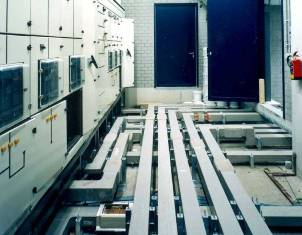Basic requirements for projects of power electrical equipment
 The design should be based on the following basic principles.
The design should be based on the following basic principles.
1. Strict compliance with the current "Rules for electrical installation" (PUE). It should be borne in mind that the "Rules" are not completely stable and that even in the period between editions they can be amended and supplemented, about which the designer must have clear and timely information.
2. Ensuring reliability and ease of use. It should be borne in mind that even theoretically correct decisions made on the basis of a technological task sometimes turn out to be practically imperfect. Already during the period of testing and setting up the installations, sometimes defects in the location of the equipment (from the point of view of ease of use or environmental impact), insufficient reserve in the switchgear or in the throughput of the supply lines, the density of the dimensions of special electrical rooms, etc.
Therefore, the design of power electrical equipment, as well as other electrical installations, should be based on a thorough familiarization with the technological part of the project, studying the technological process in existing similar or related facilities, taking into account the operating experience of electrical installations of operating enterprises.

3. The reality of receiving selected products from manufacturers. When choosing electrical equipment, electrical structures and cable products, we must adhere as much as possible to the current nomenclature of manufacturers and avoid the use of products, both discontinued and, as far as possible, non-standard, for which special orders are necessary, for extend delivery times and result in an increase in overall installation costs.
4. Provision of industrial methods for the production of electrical works. Here we mean the widespread use of large blocks of the electrical network (including structures for installing various types of equipment), which allows most of the electrical work to be transferred to electrical workshops, and sometimes, with sufficient complexity and mass use of structures, to electrical product factories.
The pre-production of individual blocks allows electrical installation works to be carried out using high-speed industrial methods to reduce their costs and improve their quality.
It is equally important to free electricians from the work of drilling grooves in floors and walls, passages through mezzanine ceilings, currents through main walls, etc.All such channels and holes as well as built-in parts in reinforced concrete structures of buildings must be provided for in working construction drawings based on construction buildings issued in a timely manner by electrical designers.

5. Connection of power supply networks with networks of other electrical installations. In the case of insufficiently coordinated design of various electrical installations at the same site, an unjustified variety of routes and methods of network implementation may arise, as a result of which the scope of ordered materials expands and, most importantly, the volume and cost of the installation the work increases and the work becomes more complex. Therefore, all types of electrical networks of an enterprise must be designed as a single complex.
6. Connecting the locations of the power electrical equipment and the routes of the electrical networks with water installations and process pipelines. When choosing the location of electrical equipment and electrical structures, as well as the route of the electrical network, it is necessary to take into account the location of water installations and pipelines for various purposes.
The inconsistency in the design of electrical, plumbing and technological devices often leads to the impossibility of placing one or the other due to limited space or to violation of the permissible dimensions of convergence between them. As a result, changes occur during the installation, it is more likely that the installation of different devices is carried out, as a rule, by different organizations, and not always at the same time.
7. Ensuring profitability of decisions.Economic issues are very important and at the same time quite difficult to project. Basically, they boil down to selecting the most economical of the otherwise equivalent options and determining the appropriate level of reserve or stock.
As for the latter, it must be said that when choosing the cross-sections of the electrical networks, the dimensions of the electrical rooms, the capacity of the switchgear, etc., a certain minimum margin is always necessary, since it ensures the flexibility of work and the possibility of replacing some products with others during delivery.
A larger provision or reserve may be appropriate if it is justified, for example, by the actual prospects for the development of the enterprise. On the contrary, unreasonable stock in the said items is excessive and should not be tolerated.
It should be especially emphasized that in the last analysis the efficiency of the installation is determined not only by the initial costs during its construction, but mainly by the costs during its operation, including its impact on the economic results of the enterprise. From this point of view, the narrow desire to make the installation only the cheapest in the installation should be strongly condemned.

